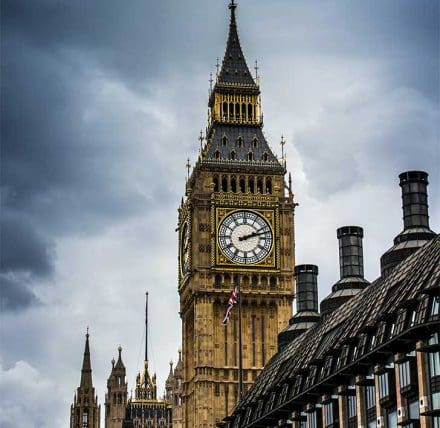INSIGHTS
The Subsidy Control Bill, published in June 2020, received Royal Assent on 28 April and puts in place a new post-Brexit UK subsidy control regime (to replace the previous EU State aid regime).The new regime under the Subsidy Control Act is expected to become operational in autumn 2022 and further legislation and guidelines will be published in advance. In the meantime, the subsidy control provisions in the UK-EU Trade and Co-operation Agreement still apply.
The UK Government’s stated rationale behind the creation of the Act is to establish a more efficient and effective UK-centric regime (whilst still meeting international commitments) than that which previously existed under EU law. Although the full detail of the new regime is not yet fully known, it does appear that it is perhaps not as “light touch” as anticipated.
Public bodies proposing to provide assistance to an organisation will require to undertake potentially significant legal and economic analysis to determine whether that assistance constitutes a subsidy within the meaning of the Act and, if it does, whether it meets the seven principles which would allow the subsidy to be classified as compliant subsidy.
The new legislation appears to give significant autonomy to public authorities, granting them the power to make subsidy schemes, award subsidies and discretion to decide whether to refer certain types of subsidy to the Competition and Markets Authority (CMA).
Seven Principles
The Act sets out seven principles which must be considered by public authorities as part of the decision-making process.
Awards of subsidies or subsidy schemes must be:
- In the common interest
- Proportionate and necessary
- Designed to change the economic behaviour of the beneficiary
- Not be compensating for costs that would be funded by the beneficiary anyway
- Be a less distortive means of achieving a policy objective
- Minimise any negative effect on competition and investment within the UK, and
- The beneficial effects of awarding a subsidy should outweigh any negative effects.
Additional principles reflecting the UK’s international commitments are to be considered for certain types of energy and environmental subsidies.
Transparency
Transparency is a key theme of the Act which provides for the creation of a database of subsidies and subsidy schemes. The database will be freely accessible and will allow the public and any interested parties to scrutinise the consideration given to the seven principles by public authorities during the decision making process.
Streamlined Subsidy Schemes
The 2022 Act introduces “Streamlined Routes” for low risk subsidies. Streamlined Routes will be subsidy schemes created by a UK Government Minister and laid before Parliament and will be specifically designed to comply with the governing legislation.
Streamlined Routes are intended to offer public authorities a faster, more efficient way to award low risk subsidies. Subsidies that meet the eligibility criteria set out in the Routes will be taken to be compliant with the legislation and awarded accordingly. They will therefore be exempt from referral to the new Subsidy Advice Unit (SAU), which will be established within the CMA under the 2022 Act. It is anticipated that one such Route will be created for Clean Heat, in order to help the Government achieve its “Net Zero” goal.
Subsidies and Schemes of Interest (SoI) or Particular Interest (SoPI)
The Act also makes provision for greater scrutiny of subsidies more likely to distort the market. Such subsidies are defined as Subsidies or Schemes of Interest (SSoI) and Subsidies or Schemes of Particular Interest (SSoPI). SSoIs are defined in the draft Regulations as subsidies where the total amount of the subsidy exceeds £5million (Reg 4(2)(a)). SSoIs also encompass rescue subsidies, subsidies related to liquidating deposit takers or insurance companies, and subsidies related to liquidity provision for deposit takers or insurance companies (Reg 4(3)). SSoIs will be subject to voluntary referrals to the SAU.
SSoPIs are defined in the draft Regulations as subsidies where the total amount of the subsidy exceeds £10million (Reg 3(2)(a)). SSoPIs also encompass subsidies over £5million in relation to sensitive sectors (Reg 3(3)), subsidies relating to restructuring, and subsidies relating to restructuring deposit takers or insurance companies (Reg 3(4)). SSoPIs will be subject to mandatory referrals to the CMA.
The monetary thresholds suggested were the subject of a consultation which ended on 6 May, with some commentators suggesting they are low and may lead to the CMA becoming overstretched. The outcome of the consultation is expected to be published soon. With the CMA obligated to produce a report within 30 days of accepting a referral, regardless of whether the referral is mandatory or voluntary, the Government will need to carefully balance the threshold values with the need to safeguard against market distortion.
Enforcement
The Competition Appeal Tribunal (CAT) will adjudicate reviews of subsidy decisions and will be able to award the judicial review remedies available to the courts. The Act also states that the CAT will have an additional remedy available, whereby subsidies which are not compliant with the requirements can be recovered.
The Subsidy Control Bill was drafted to fill the legislative void as a result of the UK’s exit from the EU. A number of the provisions and exemptions therefore, perhaps unsurprisingly, mirror EU law. As regards the detail of the legal framework, the Regulations are still in draft form and some monetary thresholds are still to be confirmed.
The rationale behind the 2022 Act is to implement subsidy controls which are tailored to UK conditions and ambitions, whilst still complying with international obligations. This will inevitably involve balancing safeguarding measures and existing obligations against making the awards process more effective and efficient.
About the author
RELATED
CONTACT US
Call us for free on 0330 912 0294 or complete our online form below for legal advice or to arrange a call back.


